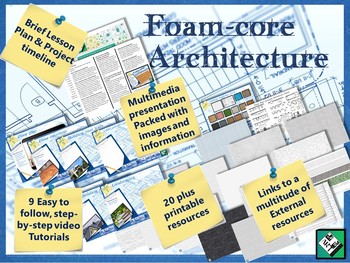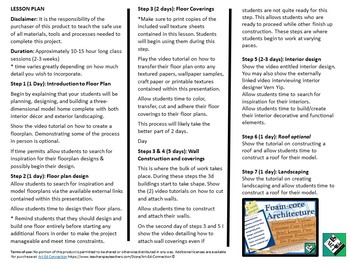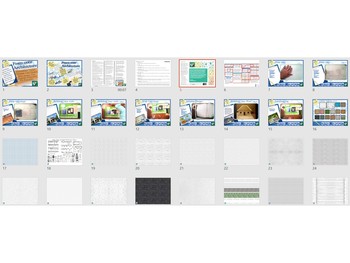Foam Board Architecture Project Lesson for Middle and High School
- PPTX
Description
In this lesson students become engineers, architects, and designers as they work to plan, design, and build a model house from foam-core board. Students design a floor plan then construct walls and attach them directly to their plan. After construction is complete students are tasked with thinking like designers as they choose or create floor and wall covering, build furniture and other interior fixtures, and even consider the surrounding landscaping.
This lesson includes:
Ptintable textures
Printable grid paper
Printable blueprint icons
Links to external resources
Instructional videos
Links to Common Core
A brief lesson plan and project timeline
Project Duration: about 10 hour class sessions (2-3 weeks)
Be the first to here about our new resources, SALES, and giveaways! Sign up for our e-update.





